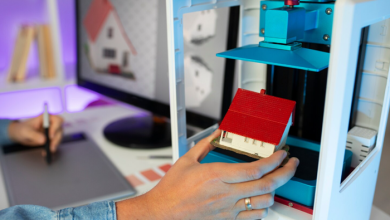
Generative AI has been all the rage since the introduction of ChatGPT. The technology has become a transformative force with applications in natural language processing, image synthesis, content creation, and more. While single modalities introduced GenAI to the world, multimodal integration is the next frontier. The development allows AI algorithms to seamlessly process and generate content across a wider range of data types. Today, GenAI applications are used to process videos, audio, sound effects (SFX), and sensory data. Here’s an overview of how multimodal integration is impacting different industries:
Revolutionizing the Gaming Industry
Multimodal AI has found application in game development, player interactions, and cross-platform experiences. Software providers that power online casinos can accelerate the production of slots, roulettes, poker, baccarat, blackjack, crash games, bingo, and other RNG-based games. Thanks to the enhanced conceptualization of multimodal AI, casino and computer games feature realistic themes, characters, terrains, and narratives. GenAI also automates content creation and reduces development timelines and costs, resulting in more games, higher RTPs, and increased incentives from gaming and gambling providers.
Multimodal AI also enables the creation of characters capable of natural conversation, complex emotions, adaptive behaviors, and voice command and facial expression interpretation—acting as a Model Diplomat between text, voice, visuals, and user intent. In cross-platform experiences, multimodal GenAI enables the development of games that seamlessly transition between devices. Gamers can start with consoles and move to mobile devices or VR headsets, and the AI automatically adapts the gameplay, audio, and graphics to fit each platform.
Driving Innovations in VR and AR
Multimodal generative artificial intelligence is one of the driving forces behind advancements in the VR and AR sectors. The ability to process text, images, sound, video, and sensory data allows VR and AR systems to create more immersive and interactive environments that adapt to users in real-time. Traditional VR environments involve manual development, which limits scalability. Multimodal AI autonomously creates rich, interactive worlds, enabling dynamic content creation of virtual worlds and NPCs.
AI can generate terrains, buildings, and objects that adapt to story progression and user interaction. The integration of multiple data types also enhances sensory augmentation, combining haptic feedback with AI-generated stimuli to create more immersive experiences. For instance, when practicing with a virtual ping pong trainer, AI can generate the sound of the ball hitting the table and racket and mimic the impact by producing a vibration in the controller. Meanwhile, a real-time AR display shows the trajectory, projections, and feedback on swing techniques.
Enhancing Digital Twin Technology
Multimodal GenAI allows AI-powered digital twins to provide enhanced simulations, remote monitoring, and improved control of resources. Digital twins are virtual replicas of physical systems. Multimodal AI systems can process various data sets from textual logs, video feeds, IoT devices, and sensory inputs, enabling accurate and enhanced simulations and actionable insights. For instance, factories and energy grids with AI-powered digital twins can simulate different scenarios and generate feedback used to review system performance, optimize efficiency, and predict failure using patterns.
The multimodal systems synthesize real-time data from sensors, text-based instructions, and visual inspections captured by surveillance systems in industrial settings. AI-powered digital twins used in healthcare can also combine medical imaging with textual patient history in EHR, and real-time inputs and metrics from the doctor to create personalized diagnostics and treatment plans. In construction and logistics industries, AI-powered digital twins can integrate data from drone video feeds, sensors, and text reports to enable real-time monitoring and decision-making. In education, multimodal AI can generate 3D models of sites, molecules, or objects, complete with audio narration, explanatory text, and haptic feedback.
Advancing Single Modal AI Systems
Multimodal GenAI systems can synthesize, process, and generate content across multiple data types. The first wave of generative AI models was based on single modalities. For instance, ChatGPT was designed to process text only, making it an instant hit among scholars, authors, script writers, and bloggers. Meanwhile, DALL-E was designed to synthesize images. Multimodal integrations build on these foundational models to process various data types. The AI systems combine text, image, audio, and video synthesis capabilities to create more complex outputs.
Multimodal integration is credited to recent developments in large-scale transformer architectures. The architectures build on foundational models to integrate visual, textual, and auditory data to enhance contextual understanding and bridge the gap between static and dynamic content. Some systems can process sensory data like haptics enabling AI tools to develop a comprehensive and cohesive understanding of the real world. The tools can mimic human creativity and perception with stunning precision, resulting in realistic generations.
The Future of Multimodal Generative AI
Multimodal integration is the next frontier of generative artificial intelligence, and the technology is already in use. Content creators are using multimodal systems to generate animations, videos, games, and digital twins. Like most technological advancements, there are challenges to address, including technical complexities, privacy, security, bias, and ethical use. However, the future of GenAI will involve multimodal integrations of all data types, resulting in creations barely distinguishable from human conceptions and perceptions. Multimodal AI seeks to converge digital and physical realities, ultimately redefining and revolutionizing a huge part of how people live, work, and have fun in the modern digital age.




